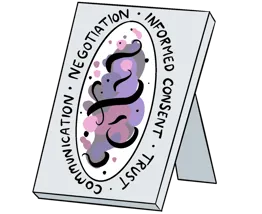Enrol in an online course today for flexible, self-paced learning—no fixed schedule required. Plus, enjoy lifetime access to course materials for convenient revisiting.
What Trauma Is and What Trauma Is Not

In my last blog, Having a Trauma Lens: Why Multifocals are Essential, we looked at why it’s important for therapists to be able to differentiate between different types of trauma, and non-traumatic experiences. In trauma treatment, we work with these types of experiences differently.
To recap, we looked at Pat Ogden’s three key categories of experience:
1. Trauma related tendencies These are related to overwhelming experiences that cannot be integrated, and typically elicit sub-cortical animal defensive mechanisms and dysregulated affect.
2. Maladaptive attachment-related tendencies These stem from non-traumatic experiences with early childhood caregivers. These are experiences that cause emotional distress, but do not overwhelm the individual.
3. Relational trauma This ensues when the above experiences are overwhelming or perceived as dangerous, such that animal defensive tendencies are employed.
I suggested a fourth category: Adaptable adverse experiences (Jarvis, 2019). Non-attachment related experiences that impact the nervous system but do not evoke animal defensive responses.
Janina Fisher (2009) makes some important distinctions as to what trauma is and what trauma is not. In the first list below, animal defence tendencies are evoked in the individual giving rise to the on-going affects of trauma:
- ‘Frightened and frightening’ caregiving
- Neglect, separation from parents and abandonment (by Bruce D Perry)
- Exposure to domestic violence or witnessing violence
- The secondary effects of parental PTSD (for more see this paper by Rachel Yehuda et al)
- Accidents, medical crises, surgery and invasive procedures
- Death of a parent or parental figure
The above list differs from maladaptive attachment-related experiences in the list below, where no sub-cortical animal defence tendencies are employed:
- Emotional abuse unless ‘frightened or frightening’
- Critical, cold, detached or judgmental parenting
- Non-traumatic bullying: the kind that inflicts emotional pain but not fear or terror
- Strict, rigid parental behaviour or rigid childhood environment
- Parental rejection or failure to bond
- Feeling of not being loved or accepted by parents
The above descriptions and what to look out for greatly inform the therapeutic alliance and direction of therapy because they give insights into how to best therapeutically work with an individual.
For instance, imagine a client presenting with a number of symptoms such as hyper-vigilance and difficulty sleeping mixed with anxiety and depression. In the initial assessment, I might ask a simple question like, “Were either one of your parents frightened or frightening?” If the answer is “yes”, this will give me a whole lot of information, without me having to ask a lot more and further dysregulate the client. From this question, I’ll be able to conclude that the individual’s source of safety was also a source of danger. This will inform me on the need for longer-term therapy so I can work with the developmental trauma. Whereas, a client presenting with similar symptoms, who had a car accident aged eight but no developmental trauma, might require a more straightforward approach and shorter-term therapy. I will say more about how a trauma-wise therapist works in the room in my next blog.
But remember that just because someone experiences trauma doesn’t mean that they will be impacted by it and need therapy or need long-term therapy. This will depend on the vulnerability of their nervous system (specifically how vulnerable their nervous system was in childhood).
Now that ‘trauma’ is such a buzzword, it is also worth being alert to the fact that our use of the word may differ from that of our client. A simple bit of psychoeducation with new clients can go a long way to normalising symptoms and behaviours and reducing shame and stigmas. However, telling an existing client that they don’t have trauma, when this may be a strong belief and even a part of their identity, might not go down so well. If you think it will help the outcome, you will need to ascertain if, how and when to approach this topic with your client.


















